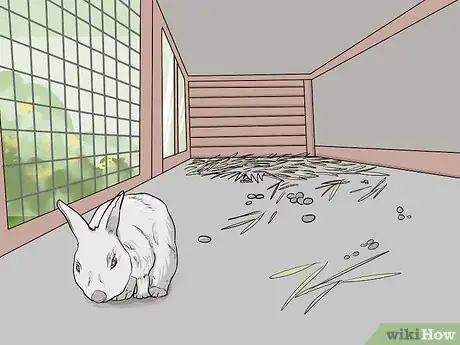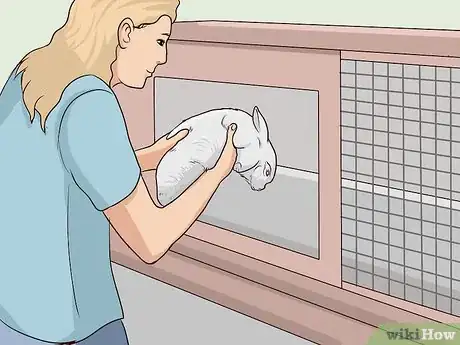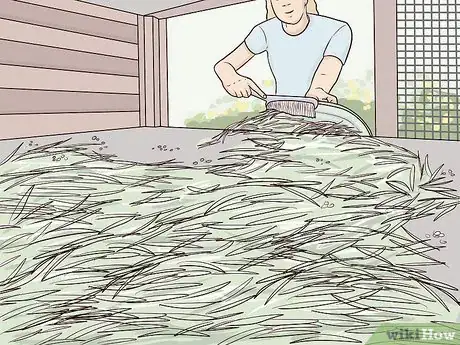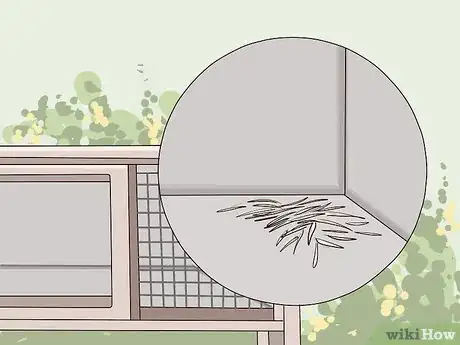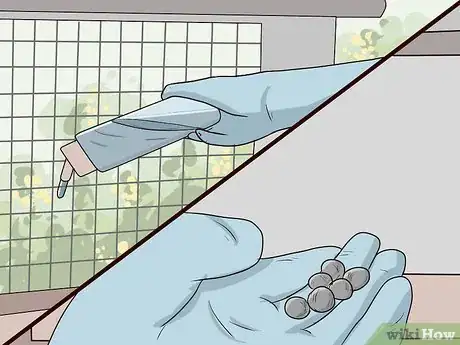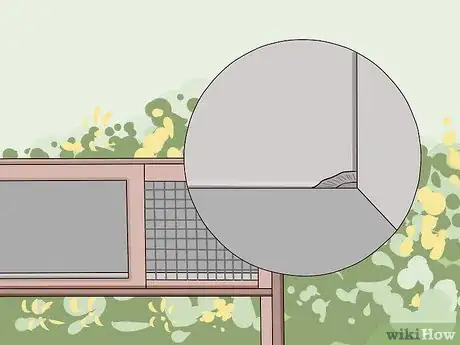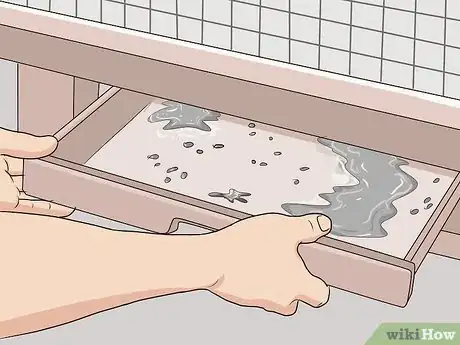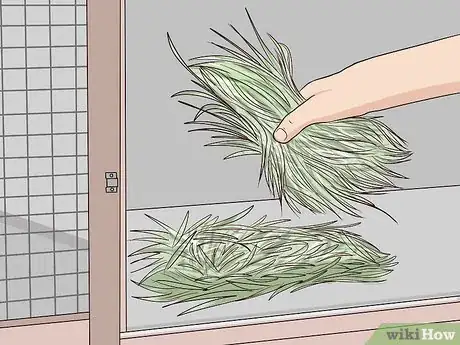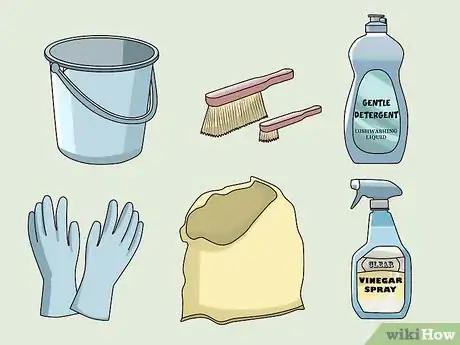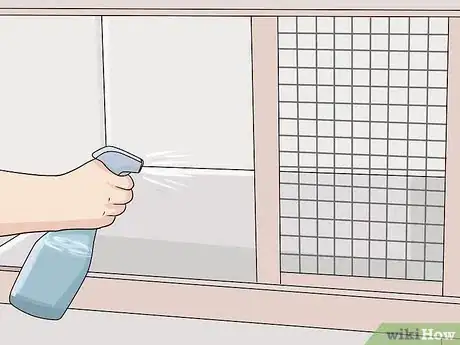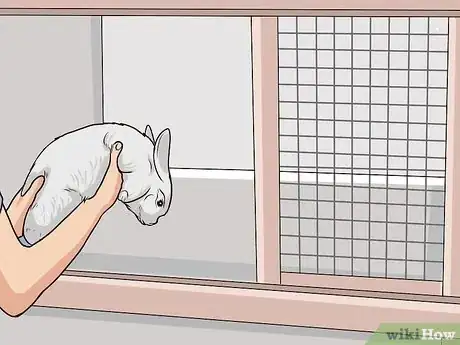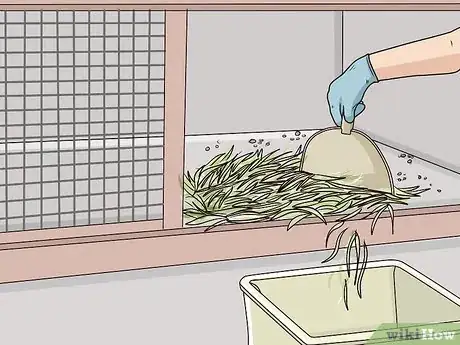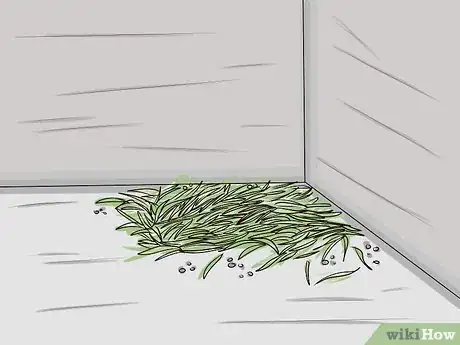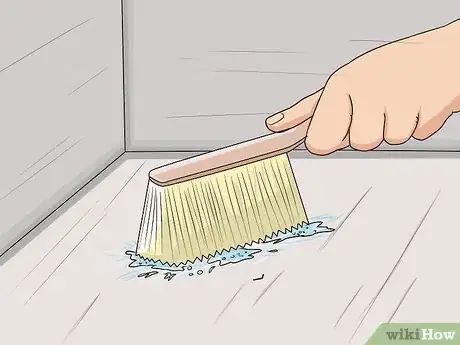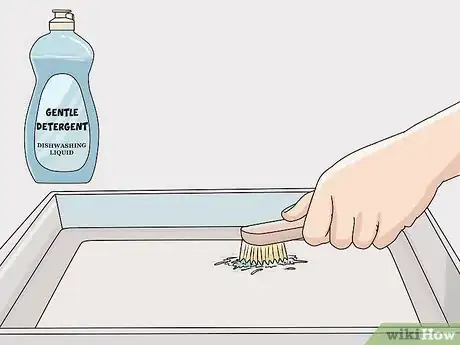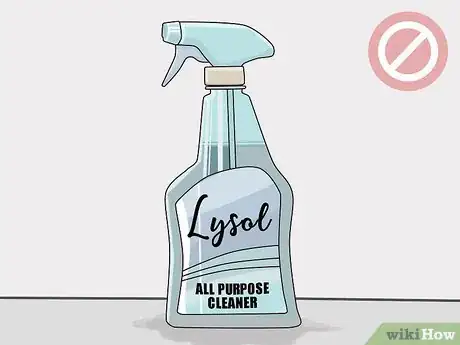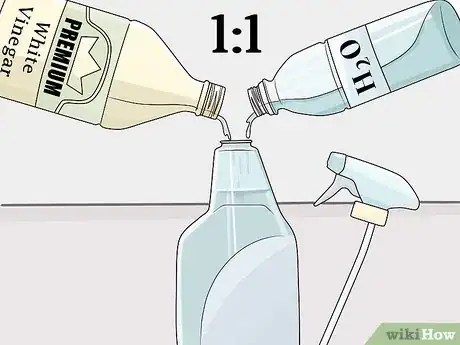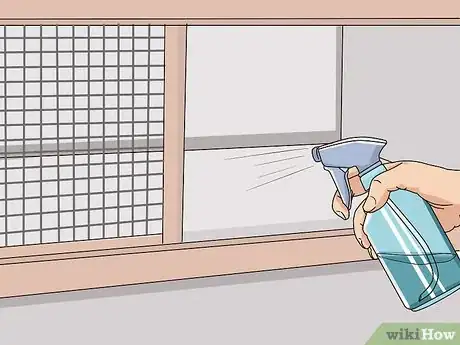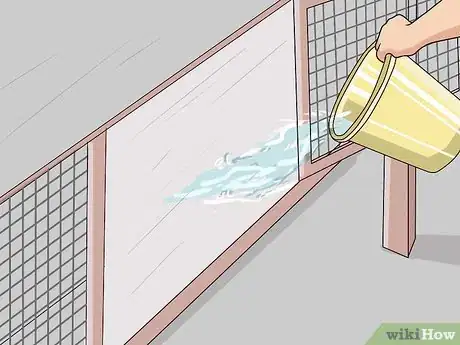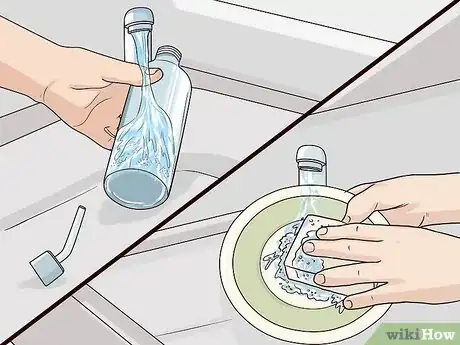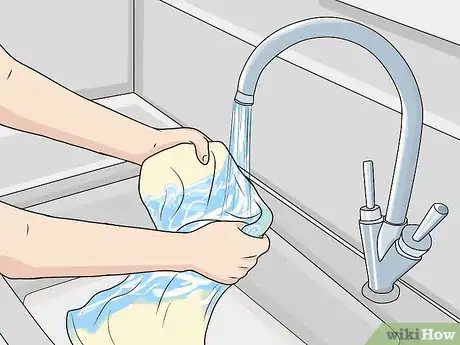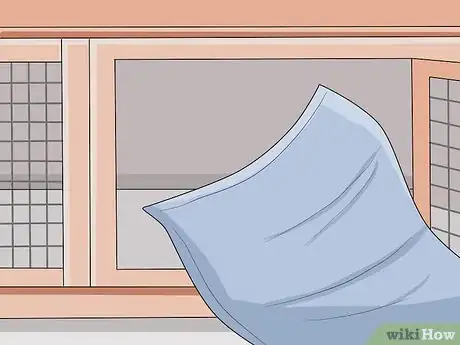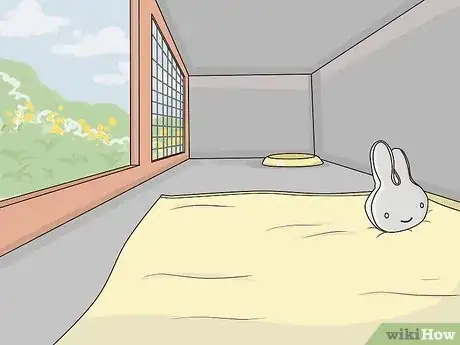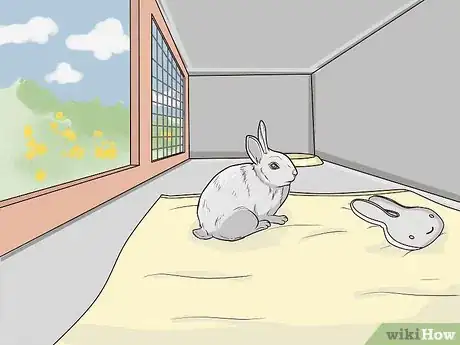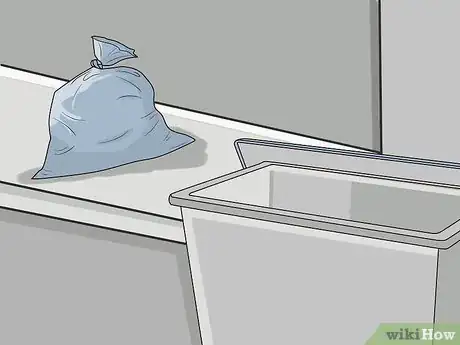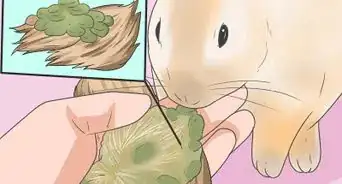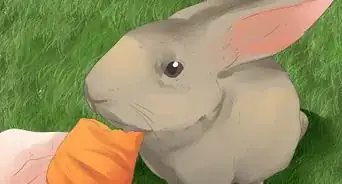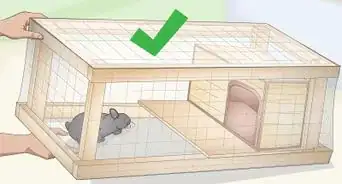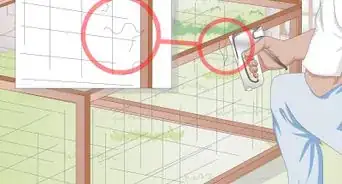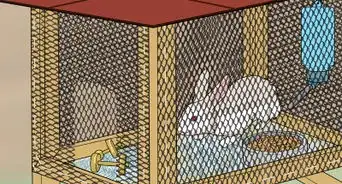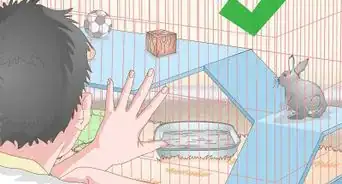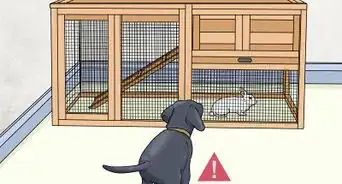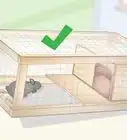This article was co-authored by Pippa Elliott, MRCVS. Dr. Elliott, BVMS, MRCVS is a veterinarian with over 30 years of experience in veterinary surgery and companion animal practice. She graduated from the University of Glasgow in 1987 with a degree in veterinary medicine and surgery. She has worked at the same animal clinic in her hometown for over 20 years.
wikiHow marks an article as reader-approved once it receives enough positive feedback. In this case, 90% of readers who voted found the article helpful, earning it our reader-approved status.
This article has been viewed 204,383 times.
Rabbits are relatively clean animals, but they still need to have their hutches cleaned on a regular basis. Do a quick clean of the hutch every day to remove old food and soiled bedding. The hutch should be completely cleaned and disinfected on a weekly basis. Then your bunny will live happily in a clean and safe place.
Steps
Cleaning the Hutch Daily
-
1Do a quick clean of the hutch every day. Rabbit hutches should be cleaned every day to ensure that your rabbit lives in a clean and sanitary environment. Soiled bedding material and old food can easily create an unclean hutch. Plan to take a few minutes every day to tidy up your hutch.Make sure to :
- Give fresh water
- Wash food/water bowls
- Put in hay
- Check that no accidents have happened
- Sweeping up any poo that hasn't made it's way into the litter box
-
2Take your rabbit out. Place your rabbit in a temporary holding pen, rabbit run, or another place where he/she will be safe while you clean the hutch. Be sure to give her/him some food, water, and a litter box, along with a couple of toys that they enjoy.Advertisement
-
3Remove materials from the hutch. Take out old and unwanted food. Remove soiled litter, hay, and fur from the hutch.
- You can wear gloves if you want to. Place them in a garbage bag after disposal.
-
4Leave one small corner alone. Rabbits mark their territory with scents. They can become stressed if they are reintroduced to a hutch that does not have any familiar scent. When you empty out the hutch, leave one small area untouched. Don't leave this corner untouched forever, as it may grow mould, get wee in. Maybe put a towel that smells of them.
- The next time you clean the hutch, leave a different area alone. Make sure to clean the area that you skipped this time.
-
5Assess your rabbit’s health. As you empty the hutch, use this opportunity to check your rabbit’s health by observing how much food and water is being consumed. Is your rabbit eating a good amount of food and drinking a good amount of water?Also check the quality of droppings left by your rabbit.[1]
-
6Check the condition of the cage. Inspect the cage for damage, holes, and other problems that might compromise the safety of your rabbit. If it is wood, make sure that they haven't chewed any of it. If it is plastic, try to see if any liquid has soaked into the plastic. [2]
- Throw out any toys that are damaged or frayed. Put some new toys in. Maybe even grab a card-board box, or loo roll tubes.
-
7Clean out the drop tray. Many wire cages have a tray underneath that catches droppings. Dump out all material that has collected in this tray. After you have finished, make sure to put on lots of soft blankets and towels, as wire cage bottoms really hurt rabbit's feet.
-
8Replace soiled bedding material. When you’ve finished cleaning out the hutch, replace the materials that line the bottom of the cage. Make sure there is enough material to cover the entire bottom of the hutch.
-
9Put your rabbit back into the cage. Allow your rabbit back into the hutch. Be sure to close the hutch door securely.Maybe stay with it while it looks around again, or to see it play with some new toys.
Cleaning and Disinfecting the Hutch Weekly
-
1Gather your supplies. As you prepare to clean and disinfect your rabbit’s hutch, make sure to have all your supplies on hand. You will need ready access to the following items:
- Bucket
- Stiff brush
- Smaller brush or toothbrush for hard-to-reach spots
- Vinegar spray
- Gentle dish soap (friendly for animals)
- Garbage bag
- Gloves
-
2Plan on cleaning and disinfecting the hutch every week. Rabbit hutches should be thoroughly cleaned and disinfected at least once a week. The cage floor will get soiled quickly. This can pose a health risk to your rabbit if you don’t keep it tidy and disinfected.[3]
-
3Take your rabbit out. Place your rabbit in a temporary holding pen, rabbit run, or another place where she/he will be safe while you clean the hutch. Be sure to give her/him some food and water, along with a couple of toys and a litter box.
-
4Remove materials from the hutch. Take out old and unwanted food. Remove soiled litter, hay, and fur from the hutch.
- Wear gloves as you remove these materials. Place them in a garbage bag for disposal.
-
5Leave one small corner alone. Rabbits mark their territory with scents. They can become stressed if they are reintroduced to a hutch that does not have any familiar scent. When you empty out the hutch, leave one small area untouched.
- The next time you clean the hutch, leave a different area alone. Make sure to clean the area that you skipped this time.
-
6Use a stiff-bristled brush to scrub the hutch. Use warm water and gentle dish soap to scrub the hutch.
- Use a smaller brush or a toothbrush to reach corners and other hard-to-reach spots in the hutch.
- You can also use a pressure washer if your hutch is a steel cage. If the hutch is permanently attached to a surface, make sure the attachments are secure before turning on the pressure washer.[4] It may work better to take the hutch down and place it on a gravel or concrete area to pressure wash it. Maybe take it outside if it is nice.
- Some people use a propane torch on steel cages. [5] This will burn away any residue from the cage. Be sure to proceed carefully if you use this method. Use oven mitts or other heavy-duty gloves, as well as goggles, when cleaning a hutch this way. Don’t use a torch if any part of the cage is wooden.
-
7Scrub the drop tray. If your hutch has a drop tray, be sure to scrub this with a brush. Use hot water and a gentle dish soap.
-
8Don’t use chemicals to disinfect the hutch. Stay away from Lysol and other disinfecting chemicals. These can leave residues in the hutch that are harmful to your rabbit.[6]
-
9Choose a white vinegar solution for disinfecting. Vinegar is a natural disinfectant,[7] and is not harmful to people or animals. Mix up a solution of 1 part white vinegar to 1 part warm water. Put it in a clean spray bottle. Spray vinegar directly on the hutch to disinfect it.[8]
- You can also use bleach. Be sure to use 1 part bleach to 5 parts water. Use this mixture in a well-ventilated area. Use gloves when cleaning with bleach.
- Some rabbit breeders use Vanodine, which is an iodine-based disinfectant. The antiseptic betadine mixed with hydrogen peroxide is another option.[9]
-
10Spray vinegar disinfectant on the hutch. Use a liberal amount of disinfectant so that the hutch is completely saturated in the liquid. Let it stand for 10 minutes.[10]
-
11Rinse the hutch thoroughly. Use clean, cool water to rinse the hutch so that there is no residue. If there is any wood material in the hutch, it’s especially important to rinse thoroughly, since wood is porous and can absorb cleaner more readily.[11]
- Although vinegar residue is not harmful, bleach solution residue is. It’s imperative that you rinse off bleach residue completely.
-
12Let the hutch dry in the sunlight. Sunlight will dry the hutch more quickly. It is also especially important if you use bleach to clean the hutch. The sunlight will break down any bleach residue that was left after rinsing.[12]
- Make sure the hutch is completely dry before putting things back together and reintroducing your bunny to the hutch.
-
13Clean the food and water dishes. The feeding bowls and water bottles should be cleaned and sanitized at least once a week. Scrub them with soap and hot water.[13] Disinfect by spraying them with vinegar.
- Use a bottle brush to clean out water bottles. Some people also put these dishes in the dishwasher.
-
14Clean the bedding. If you use bedding such as towels or blankets, be sure to wash these every week as well.
-
15Spread out fresh bedding material. Once the hutch is fully dry, you’re ready to reassemble the living space for your rabbit. Spread fresh bedding material across the entire floor of the hutch.
- Make sure to place the rabbit’s littering area in the area to which she has become accustomed.
-
16Place all accessories back in the hutch. Place the bunny’s food dish, water dish or bottle, and toys back into the hutch.
-
17Reintroduce your rabbit to the hutch. Once the hutch is completely ready for your rabbit, put her back in the hutch.
Cleaning Up
-
1Dispose of waste material. Keep all waste from the rabbit cage in a garbage bag. Tie it up tightly and throw it away.
-
2Sanitize all cleaning supplies. Be sure to clean and disinfect all supplies used to clean the hutch, including the bucket, brushes and gloves.
- Let these items dry thoroughly.
-
3Wash your hands with soap and warm water. Decrease the possibility of spreading germs by washing your hands thoroughly when you’ve finished cleaning the cage.
Expert Q&A
Did you know you can get expert answers for this article?
Unlock expert answers by supporting wikiHow
-
QuestionDoes the hutch have to be disinfected every week?
 Pippa Elliott, MRCVSDr. Elliott, BVMS, MRCVS is a veterinarian with over 30 years of experience in veterinary surgery and companion animal practice. She graduated from the University of Glasgow in 1987 with a degree in veterinary medicine and surgery. She has worked at the same animal clinic in her hometown for over 20 years.
Pippa Elliott, MRCVSDr. Elliott, BVMS, MRCVS is a veterinarian with over 30 years of experience in veterinary surgery and companion animal practice. She graduated from the University of Glasgow in 1987 with a degree in veterinary medicine and surgery. She has worked at the same animal clinic in her hometown for over 20 years.
Veterinarian Ideally, yes. You can make it easier by filling a spray bottle with your chosen disinfectant solution, and spritzing down the walls and floor. Remember your rabbit is soiling in the space where they also sleep and eat, so any bacteria will be in close contact with the rabbit, making infection more likely.
Ideally, yes. You can make it easier by filling a spray bottle with your chosen disinfectant solution, and spritzing down the walls and floor. Remember your rabbit is soiling in the space where they also sleep and eat, so any bacteria will be in close contact with the rabbit, making infection more likely.
Warnings
- If your rabbit is or has been ill, you should thoroughly clean and disinfect the hutch.⧼thumbs_response⧽
- Do not use bathroom or kitchen sinks for your hutch cleaning routines to avoid cross-contamination.[14]⧼thumbs_response⧽
References
- ↑ http://www.peteducation.com/article.cfm?c=18+1798&aid=3579
- ↑ http://www.peteducation.com/article.cfm?c=18+1798&aid=3579
- ↑ http://rabbitbreeders.us/cleaning-rabbit-cages
- ↑ http://www.thenaturetrail.com/rabbit-equipment/cleaning-and-disinfecting-rabbit-cages-and-equipment/
- ↑ http://rabbitbreeders.us/cleaning-rabbit-cages
- ↑ http://rabbitbreeders.us/cleaning-rabbit-cages
- ↑ http://www.abc.net.au/health/talkinghealth/factbuster/stories/2012/02/02/3407024.htm
- ↑ http://rabbitbreeders.us/cleaning-rabbit-cages
- ↑ http://rabbitbreeders.us/cleaning-rabbit-cages
- ↑ http://www.peteducation.com/article.cfm?c=18+1798&aid=3579
- ↑ http://www.peteducation.com/article.cfm?c=18+1798&aid=3579
- ↑ http://www.thenaturetrail.com/rabbit-equipment/cleaning-and-disinfecting-rabbit-cages-and-equipment/
- ↑ http://rabbitbreeders.us/cleaning-rabbit-cages
- ↑ http://www.peteducation.com/article.cfm?c=18+1798&aid=3579
About This Article
To clean a rabbit hutch, remove any old food or soiled bedding and clean the drop tray daily to keep your rabbit healthy. Once a week, use a stiff-bristled brush and soapy water to scrub down the hutch, as well as the drop tray and food dishes. Then, spray down the hutch with diluted white vinegar and let it sit for 10 minutes before rinsing it with clean water. Finally, allow it to dry in the sunlight before returning your rabbit and its items to the hutch. For advice from our Veterinary co-author on how to use a pressure washer to clean your rabbit’s hutch, read on!
